Commonly Asked Questions About the 25C Energy Efficient Home Improvement Credit
Do you need to owe taxes to take advantage of the 25C Energy Efficient Home Improvement Tax Credit?
The 25C tax credit is a nonrefundable personal tax credit. That means it can only be used to decrease or eliminate the federal tax liability of the homeowner in the year the insulation improvement is made. A taxpayer does not receive a credit in the form of a payment for any amount that exceeds the taxpayer’s liability for the year.
Are the credits available for improvements made to a second home or an investment property?
Improvements made to a second home or investment property are not eligible for the credit. Qualifying improvements must be made to the taxpayer’s principal place of residence.
Can a taxpayer claim the credits for expenditures incurred for a newly constructed home?
No. The tax credit is limited to insulation and air sealing improvements made to an existing home or for an addition or renovation to an existing home.
May a taxpayer include sales tax when calculating the amount of expenditures eligible for the credits?
Yes. The sales tax on qualifying insulation or air sealing material is part of the amount paid and therefore included within the eligible expense.
If labor is not an eligible expense under the 25C credit, what is considered an eligible expense?
The 25C tax credit applies to installed insulation and air sealing materials designed to reduce building heat loss or gain but does not apply to labor costs associated with its installation (labor has never been an eligible expense under the 25C tax credit). For an insulation upgrade for which a taxpayer pays a fixed price, the contractor should make a reasonable estimate of the qualifying cost of the insulation materials and the nonqualifying labor cost of the project. Nonqualifying labor expenses might reasonably be determined by estimating the total hourly wages paid to the installer(s) for project installation.
What does it mean to meet the 2021 IECC for credit eligibility?
Insulation materials and air sealing materials must meet the criteria set by the International Energy Conservation Code (“IECC”) standard in effect at the start of the year that is two years prior to the year the materials are placed in service. For projects completed in 2023, that means complying with the prescriptive requirements of the 2021 IECC. The prescriptive table of the 2021 IECC establishes ceiling, wall, and floor insulation R-value requirements. The IECC sets requirements for new construction, so strict compliance with its insulation provisions may be unachievable in existing buildings. Best efforts should be made to meet the insulation levels set by the 2021 IECC for each area of the home being upgraded. The credit does not require air leakage testing or third-party certification of compliance.
Can I claim the credit for multiple improvements in the same tax year?
There is a $1,200 yearly tax credit maximum for insulation and air sealing. Electric or natural gas heat pump water heaters, electric or natural gas heat pumps, and biomass stoves and boilers have a separate yearly credit limit of $2,000. Therefore, taxpayers may claim up to $3,200 in tax credits for combined upgrades in insulation and qualifying heating and cooling systems.
Is a certificate of insulation product purchase required?
While there are product identification number reporting
requirements for certain 25C eligible products beginning
in 2025, there are no such requirements imposed on
insulation or air sealing materials.

